[ad_1]
Coming up in this one: references to royalty, some confusing geography, and clarifying a common misconception.
So… is Australia part of the UK?
In this quick guide, we’ve brought you the answer to that question and more.
What is the UK? Is Australia part of it? What’s the deal with the sort-of-similar flags? Who are the aboriginal people of Australia? And how many questions can one writer ask at the beginning of a travel guide?
Today, Travelness are taking you on an educational multi-stop trip to Australia and back. Read on!

Is Australia Part of the UK?
No, Australia is not part of the UK, it is an independent country with its own government, laws, currency, and political system. Australia was part of the British empire until 1901 when it gained its independence. The United Kingdom is only made up of four countries: England, Scotland, Wales, and Northern Ireland.
… although many other countries have relationships and connections with the UK, no other countries or places are officially part of the UK.
The United Kingdom is a country, but the four places that are part of it are also countries of their own. For more information on all that stuff, here’s our guide to the regions and structure of the United Kingdom. There’s no point repeating here what we’ve already told you there.
Australia, as a sovereign nation, has its own distinct identity and governance. It operates under a parliamentary democracy and constitutional monarchy, with the British monarch as its ceremonial head of state. However, Australia’s constitution allows it to function as a fully independent nation with its own elected officials, legal framework, and decision-making processes.
Both nations cooperate closely on various matters, but they maintain distinct legal and political systems, and Australians are citizens of Australia, not the United Kingdom.
Despite the distinct sovereignty of Australia and the UK, they do share some similarities in their flags. Both countries incorporate the Union Jack, the flag of the United Kingdom, in their own national flags. The Australian flag features the Union Jack in the canton (the upper-left corner) along with the Southern Cross constellation and a blue field.
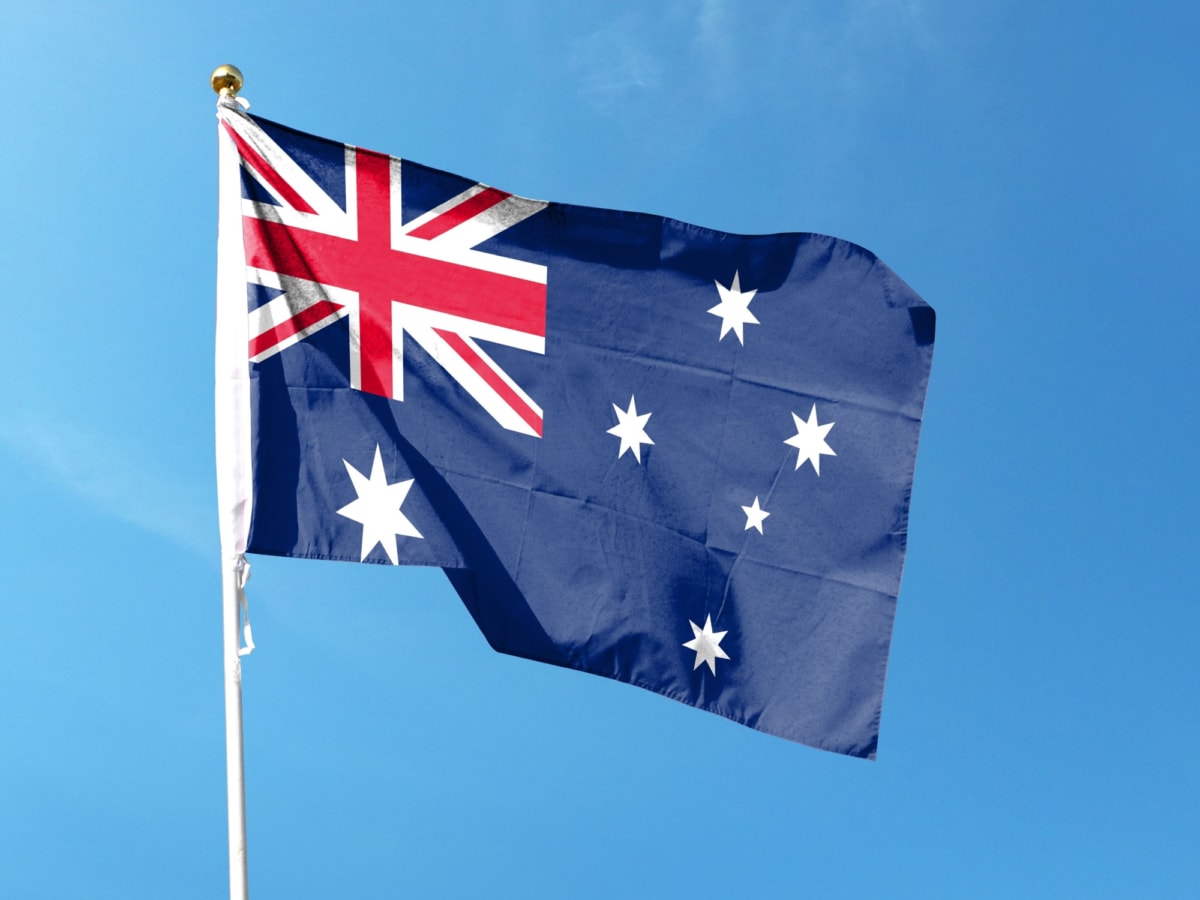

While the flags share a common element, they are distinct and represent separate nations with their own unique identities.
So in short, the answer to the question “is Australia part of the UK?” is simple: No, Australia is not part of the UK.
Was Australia Part of the UK in the Past?
No, Australia has never been part of the United Kingdom. Australia was part of the British Empire for more than 110 years from 1788 until 1901, but it was never part of the United Kingdom.
‘Wait, what are you talking about Paul? Part of the British Empire, what does that even mean?’
Well, back between the 16th and 20th centuries, Britain used to go all over the world, conquering different countries, stealing their land and their possessions, profiting from their resources, and appointing themselves as rulers and governors in those places.
It was history’s biggest-ever empire, and at one point covered around a quarter of all the land on earth. Some of the most famous empire territories* included India, Pakistan, Bangladesh, Hong Kong, Kenya, Botswana, Egypt, parts of Canada & the USA, and… I’m sure you can see where this is going by now… Australia, which they discovered in 1770 and where they first settled in 1788 (source).
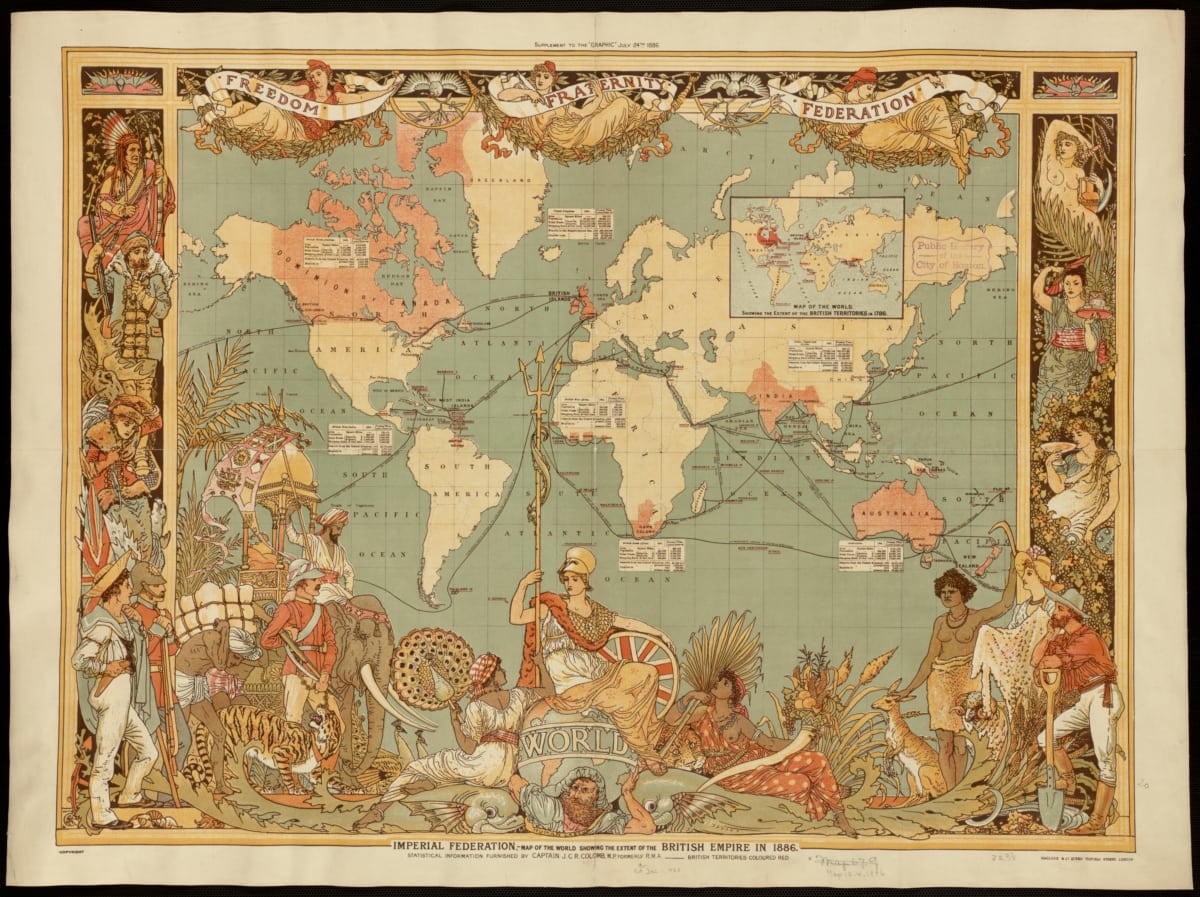

Map reproduction courtesy of the Norman B. Leventhal Map & Education Center at the Boston Public Library
*it’s worth noting that some of these places had different borders back then, and even went by different names. But let’s not get into all of the details on that for now. This is confusing enough already. For more detail on the exact places the British had colonies, here’s a list of all 90.
But enough of all that—let’s get back on topic: Australia.
So, as we’ve covered, Australia has past ties to the United Kingdom.
But because of the Commonwealth, it also has present-day ties to the United Kingdom.
The Commonwealth is a collection of 56 countries (as of 2023), including Nigeria, India, Malaysia, Singapore, Canada, Jamaica, New Zealand, the United Kingdom itself and… you guessed it… Australia (here’s a list of all 56 countries).
… this Commonwealth is an affiliation of separate nations who sort of work together on issues around democracy, economics, law, human rights, and other stuff. I’m not really sure how much the union ‘does’ in a practical sense—the union seems largely symbolic, as the vast majority of these places are former territories of the British Empire. But it’s a hefty area: around 2.5 billion people live in the Commonwealth territory.
Here’s the official Commonwealth website, to learn more about their relationships and their goals.
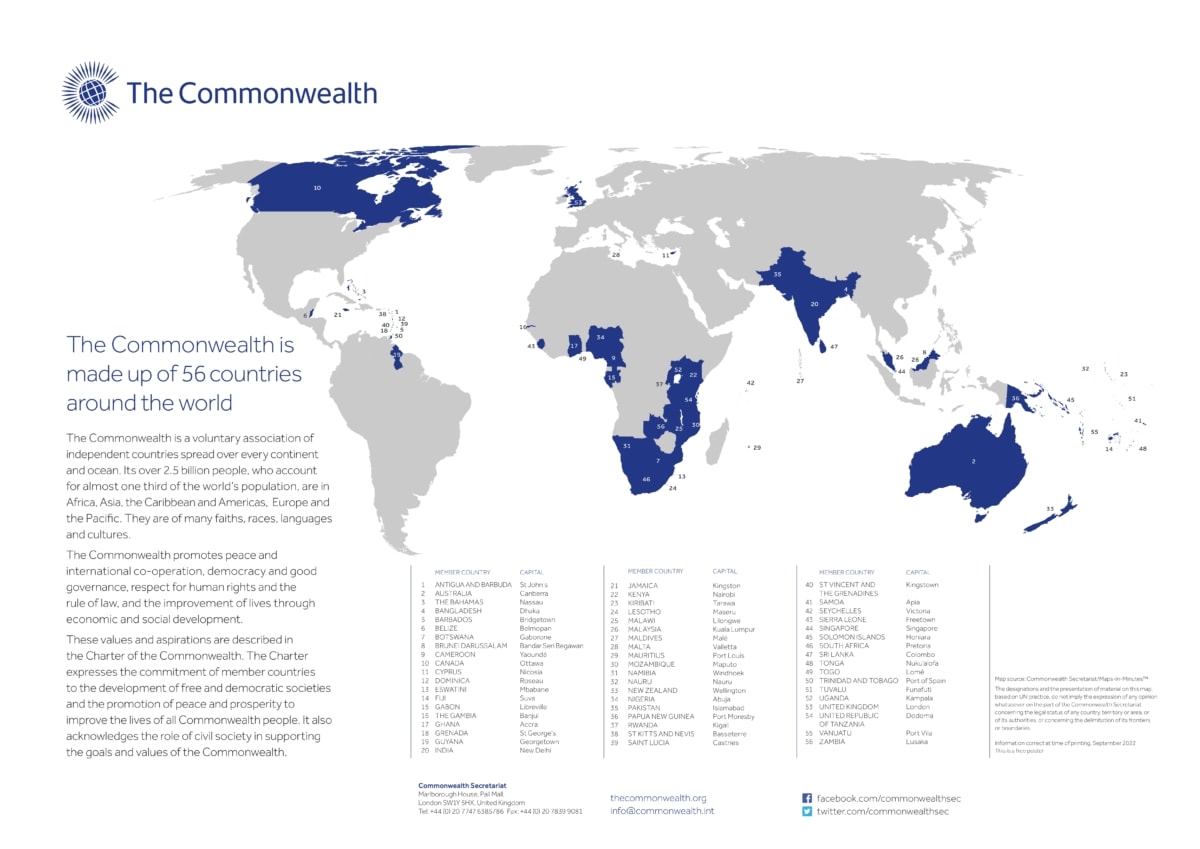

Map source: Commonwealth Secretariat/Maps-in-Minutes™ (link)
15 of these Commonwealth countries have the British monarch as their head of state. Of the other 41, some have their own monarchs, and most of them are republics.
One of these 15 is Australia. And that brings us to Australia’s modern-day connections to the UK:
Australia is part of the Commonwealth, and its official head of state is the British monarch (which, of course, is currently King Charles III).
In Australia, the UK’s reigning monarch doesn’t really have any significant power. His role is more of a symbolic one, mainly involving symbolic gestures and responsibilities. The monarch is represented by the governor-general in Australia, who sort of does things on behalf of the British monarchy. The current governor-general of Australia is David Hurley, who has a background in both politics and the military.
That said, the connections between Australia and the British monarchy are still pretty strong, and the UK royal family visit Australia relatively frequently. The previous queen used to visit Australia every couple of years or so, and other (less important) members of the royal family also sometimes visit.
*For the curious people among you, the 15 nations that have the British Monarch as their head of state are… Antigua and Barbuda, Australia, The Bahamas, Belize, Canada, Grenada, Jamaica, New Zealand, Papua New Guinea, Saint Kitts and Nevis, Saint Lucia, Saint Vincent and the Grenadines, Solomon Islands, Tuvalu, and the United Kingdom.
In case you’re wondering, yes: this past relationship is why Australia still has the British flag in the corner of its flag. As you might have noticed, a small few Commonwealth countries still have the British flag as part of their own flag.
Is Australia Still Under British Rule?
No, Australia is no more under the British rule.
As we’ve covered, Australia used to be ruled by the British Empire, when colonists arrived in the nation and started forming colonies.
The British colonial period of Australia ran from 1788 until 1901. For this entire period, there were many separate colonies in separate parts of Australia.
But in 1901, Australia gained its independence—the colonies (at this point, there were 6 of them) were united, the federation of Australia was formed, and Australia has been completely independent ever since.
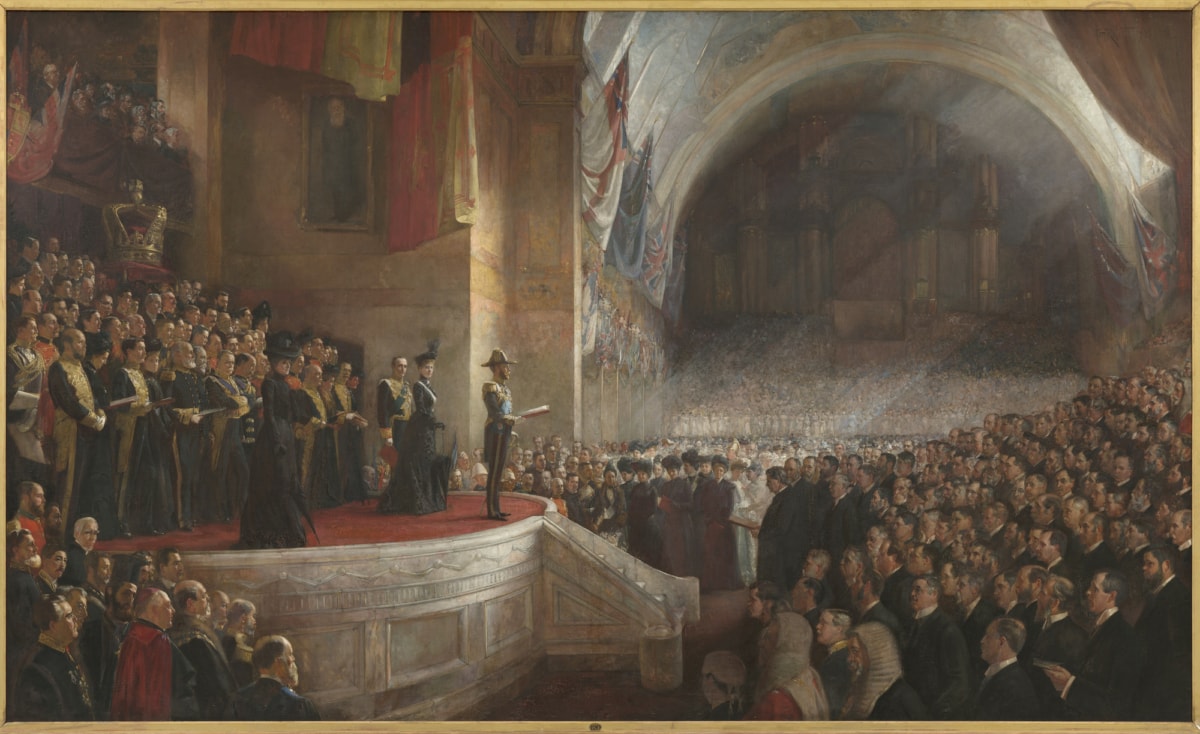

Painting by Tom Roberts, part of the Royal Collection – Public Domain
So, fun fact: Australia has now been independent from the UK for longer than it was ruled by the British Empire.
Interestingly, some Australians want these Commonwealth ties to be cut… and one day, the nation might become a completely independent republic. There was a vote for this in 1999, in which 45 percent of Australians voted in favor, and 55 percent against. So, for now, Australia is not an independent republic… but it might be one day in the future.
Why Might People Think Australia is Part of the UK?
People might think Australia is part of the UK due to a combination of historical, cultural, and geographical factors. Here are some reasons why this misconception might exist:
- Because of the British flag (Union Jack) presence on the Australian flag
- Because of the present and historical links between the two places
- Because Australia is part of the Commonwealth (as we’ve explained above)
- Because the two countries share a common language. Until the British settled in Australia, the aboriginal tribes had their own languages. But, now, of course, English is the dominant language of Australia
- Because lots of modern-day Australian culture is similar to lots of modern-day British culture
- … and, lastly, because people haven’t read this article yet 😉
The Aboriginal People of Australia
Here, it’s worth taking a little bit of time to explain that, when the Europeans decided to go and totally transform Australia, the lives of the original Australian people were changed forever.
Until 1606, when European (Dutch) settlers first came to Australia, the place was filled with many tribes (who themselves began to arrive in Australia an estimated 50,000 years ago).
Later, in 1788, when the British began to colonize Australia, they named these native people “the aboriginals.”
So, from 1606 onwards, the lives of the aboriginals were changed. Their land was cleared for agriculture, diseases and conflicts were brought to the island, and their resources and way of life were stolen from them.
Though the British Empire had a massive role to play in the history and development of Australia (and though parts of that role still influence modern-day life), it wasn’t always that way.
Now, “there are about 500 different Aboriginal peoples in Australia.” This totals almost 1 million aboriginal people… and represents around 3.8% of the entire Australian population.
Is Australia Part of the UK? Before You Go
So, now you know:
Australia is not part of the UK, and it never was.
Instead, it was previously part of the British Empire, it’s still part of the Commonwealth, the UK monarch is its (symbolic but largely uninvolved) head of state, and it has some vague political ties to the UK.
For more on the UK, here are 19 reasons to visit the United Kingdom.
And for more educational fact-fests like this one, here’s why Scotland has two flags, why the UK is home to so many stone circles and standing stones, and all the things you shouldn’t say to Scottish people.
Thanks for reading, thanks for choosing Travelness, and we’ll see you again soon. Bye for now!
[ad_2]
Source link
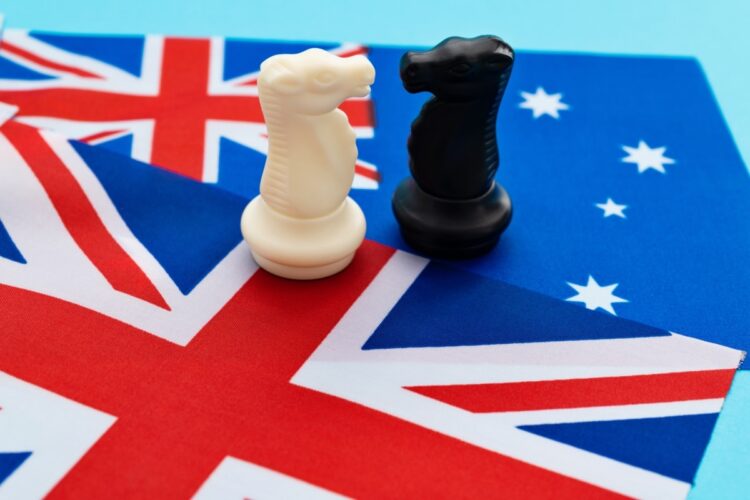


No Comments
Leave Comment